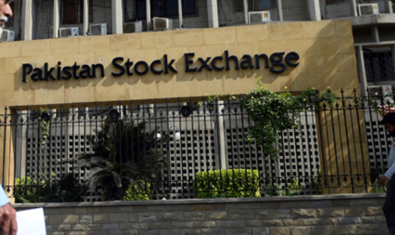A major risk to this scenario of economic recovery on a path of external and internal balance is the upsurge of COVID-19 infections all over the world and also, to a lesser degree, in Pakistan, said Ministry of Finance in its Monthly Economic Update & Outlook (November 2020) report issued on Friday.
The report also outlined the factors showing that Pakistan’s economy is underway of recovery. The MEI [Multivariate ENSO Index] shows strong growth in the first four months of the current fiscal year. Furthermore, based on current information, no significant deterioration in the balance of trade in goods and services is expected.
The inflow of workers’ remittances also remains strong, which means that it might preserve external balance. This, in turn, implies the prospect for a stable exchange rate in the near term, which may contribute, in addition to specific government measures, to reduce inflationary pressures.
The government of Pakistan also intends to keep the pandemic spread in check by imposing a number of restrictions in some sectors and areas of the economy. The effects on the economic outlook will depend on the intensity and duration of these restrictions. But well-designed government policies may soften the economic burden of these necessary restrictions.
ALSO READ
Digital Divide is a Major Obstacle in Boosting Digital Trade: Experts
On the other hand, the recent world-wide communications regarding the production of some successful new vaccines may also give rise to the possibility of back-to-normal economic activity in the near future. These developments may boost business and consumer confidence and further enhance economic growth, Finance Ministry said.
Taxation
The report also revealed that the provisional tax collection by the Federal Board of Revenue (FBR) has increased by 4.5 percent during the first four months of the current fiscal year.
Domestic tax collection grew by 5.7 percent, while customs duty declined by 1.6 percent during the period under review. For the month of October 2020, the net collection witnessed an increase of 4 percent to reach Rs. 336.1 billion against Rs. 323.0 billion in the comparable period of FY2020.
Automobiles
During July-October fiscal year 2021, total car sales increased by 8.1 percent while production plunged to 14.4 percent.
For the month of October, the production and sale of cars increased by 21.5 and 25.4 percent, respectively on a year over year (YoY) basis. Total trucks and buses sale increased by 20.8 percent and production decreased by 22.1 percent.
Energy
The government has announced a Relief Package for small and medium enterprises (SMEs), under which electricity tariff has been reduced to Rs. 8 per unit (down from Rs. 16 per unit) from November 1, 2020, till June 30, 2021, with no peak hours.
For the next three years Rs. 12 per unit of electricity tariff would be charged from all industries, which means a 25 percent tariff discount.
Under the Economic Stimulus Package, the Federal Board of Revenue (FBR) has given relief to export-oriented industries by giving Rs. 40 billion (out of Rs. 70 billion) tax refunds up till September 30, 2020.
Inflation
The report said that the national Consumer Price Index (CPI) of October 2020 was recorded at 8.9 percent compared to 11 percent in October 2019. The average CPI between July and October eased to 8.9 percent from last year’s 10.3 percent. Hence, both YoY and average inflation followed the downward path compared to the upward trend in last year.
Sensitive Price Indicator for the week ended November 19, 2020, increased by 0.24 percent on weekly basis after two consecutive declines during the month of November 2020.
The financial sector continues to perform better in the wake of unprecedented challenges due to the COVID-19 pandemic. During the first quarter, the recorded performance for this sector slightly increased to 1.1 percent of GDP against 0.7 percent recorded last year. However, it still remained below the target set for the first quarter.
The primary balance remained in surplus of Rs. 257.7 billion (0.6 percent of GDP) in Q1, FY2021. During the quarter, tax revenues (federal & provincial) stood at Rs. 1068.9 billion. Development expenditures increased by 15.4 percent for the first quarter this fiscal year against Rs 142.5 billion in the first quarter of last year.
In October 2020, the Current Account remained in surplus ($382 million) for the fourth consecutive month. Thus, the Current Account posted a surplus of $1.2 billion (1.3 percent of GDP) during July-Oct FY2021 against a deficit of $1.4 billion last year.
Foreign Investment
The report added that the foreign direct investment (FDI) increased by 67.9 percent to $317.4 million on a month over month basis in October 2020 against $189 million in September 2020. On a YoY basis, FDI increased by 150.9 percent during October 2020 and stood at $317.4 million as compared to $126.5 million in October 2019.
During July-October FY2021, FDI increased by 9.1 percent to $733.1 million as compared to $672.0 million last year.
Foreign Private Portfolio Investment recorded a net outflow of $145.6 million during July-October FY2021. Foreign Public Portfolio Investment recorded a net outflow of $162.0 million. The total foreign portfolio investment recorded an outflow of $307.5 million during July-October FY2021 against an inflow of $452.3 million last year.
Countries that majorly contributed to the inflows are UAE ($69.2 million) and Singapore ($19.2 million). While outflows destinations were UK ($106.6 million), US ($88.1 million) and Luxembourg ($29.0 million).
ALSO READ
President Alvi Suggests a Trade Triade Between China, ASEAN and Pakistan
Worker’s Remittances during July-October FY2021 rose to $9.4 billion against $7.5 billion last year, showing a growth of 26.5 percent. Share of remittances from Saudi Arabia was 28.8 percent ($2715.3 million), UAE 20.4 percent ($1924.9 million), USA 8.7 percent ($815.9 million), UK 13.4 percent ($1264 million), other GCC countries 11.2 percent ($1057.2 million), Malaysia 0.8 percent ($73.4 million), EU 8.5 percent ($804.7 million) and other countries 9 percent.
SBP Reserves
Data on Foreign Exchange Reserves for Pakistan in the report showed that the total liquid foreign exchange reserves increased to $19.3 billion by the end of October 2020, up by $3.9 billion over end-October 2019.
The breakup of reserves accumulation in October 2020 shows that the SBP’s reserves stood at $12.2 billion ($8.2 billion last year) and $7.2 billion ($7.2 billion last year) in commercial banks’ reserves. The present reserves level provides the import cover of around 3 months.
Stock Exchange
The KSE-100 index hovered around 40,000 points in October 2020 and closed at 39,888 points on October 29, 2020, losing 788 points in the month. Market capitalization lost Rs. 249 billion and settled at Rs. 7,399 billion on October 29. Major world indices have shown an oscillating trend in October 2020.

























